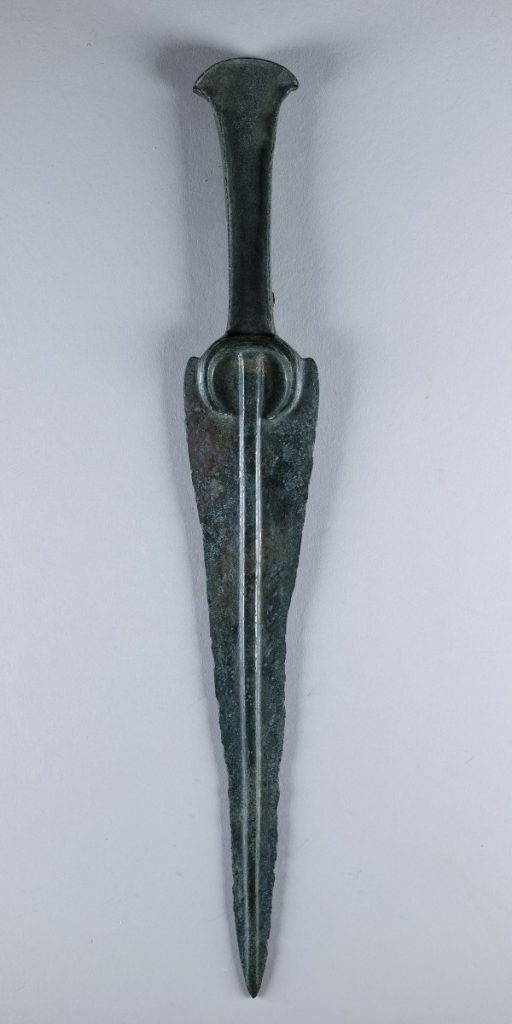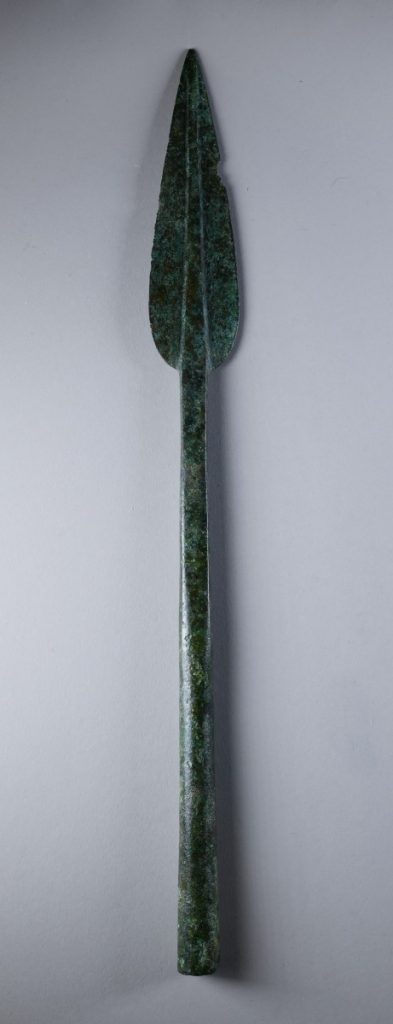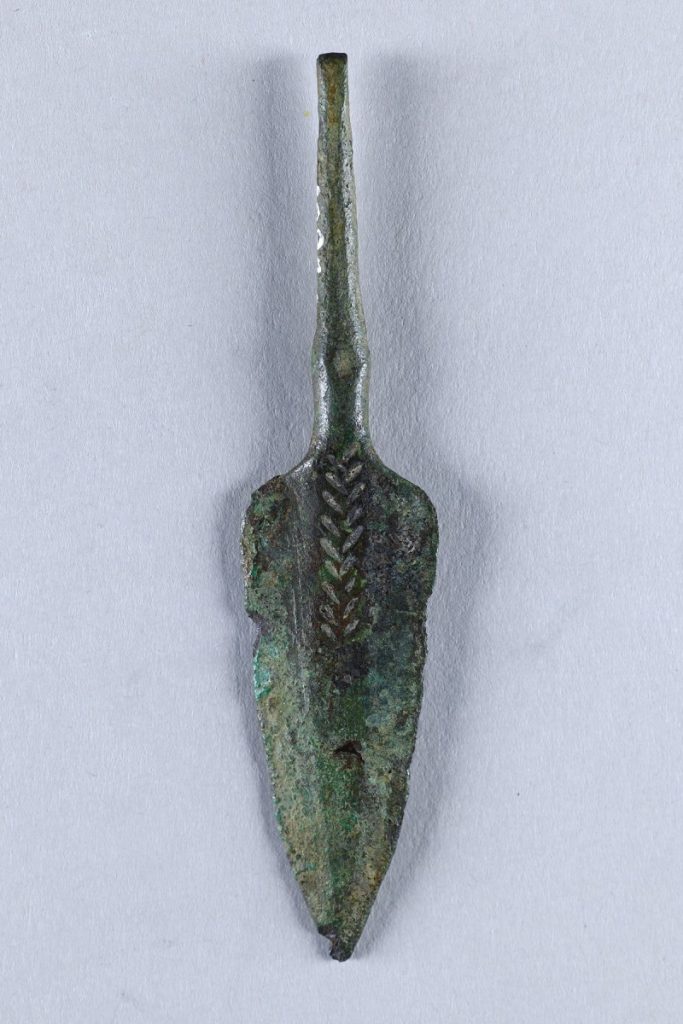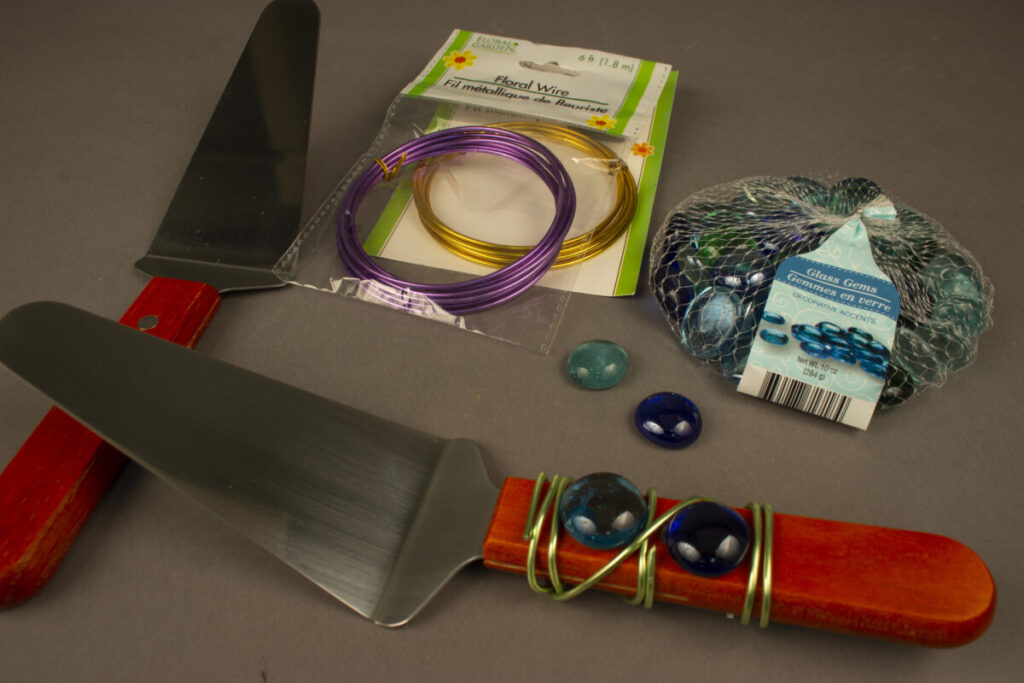Lesson Objectives: In this unit, students will learn about different types of weapons used in the Ancient Near East. They will discuss how war is described in Jewish tradition and the materials that were used to make these weapons. During this unit’s hands-on project, students will reframe their conception of weapons as entirely functional objects and learn about weapons as family heirlooms by decorating a weapon with personal and familial symbols.
Guiding Thematic Questions:
- Why do people keep heirlooms? What sorts of objects are commonly kept as heirlooms?
- How has warfare evolved since Antiquity?
- Why do we remember certain historical battles (David and Goliath, Siege of Masada, Maccabean revolt…)? What lessons might we glean from them?
Historical Context:
- Before the bronze age, weapons and knives were typically made of stone such as flint and obsidian which are too fragile to construct long thin implements such as swords. The creation of copper and bronze weaponry allowed for thinner swords to be made.
- Canaanean blades, primarily found in ancient Canaan (Israel and Lebanon) were wide blades of stone or flint used for harvesting crops and threshing cereal grains. The blade would have been attached to a wooden platform which a person would stand upon and dragged behind an animal to cut the grain.
- Iron age swords were about the same strength as bronze swords, however the manufacturing of iron swords was significantly easier and iron was more widely available, allowing for greater production.
Fun Facts:
- Armor in the ancient Middle East differed significantly from that of European contemporaries. Islamic armor was typically lighter because of the hot climate of the region and to prioritize speed over heavy defense.
Object Images:

Dagger with Crescent Guard
Northern Iran
1400-800 BCE
Bronze
10” long
Carlos Museum, Emory University
1962.44

Spearhead
Northern Iran
Late 2nd Millennium BCE
Bronze
13” long
Carlos Museum, Emory University
1982.4.1

Arrowhead
Iran
1200 –500 BCE
Bronze
3” long
Carlos Museum, Emory University
1982.4.3
Classroom Discussion Questions:
What materials are weapons typically made of?
Weapons are sometimes handed down through generations. Are there any objects that have been passed down in your family?
What symbols represent your identity?
What does “converting swords to ploughshares” mean?
What are some major battles that the ancient Israelites fought? What were the outcomes?
Project: Decorate a “Weapon”
Materials:
- pie server, wood spoon, or other small dull instrument
- paint, markers, stickers, other decorating supplies
- cleaning supplies
Instructions:
- decorate your “weapon” with images and identifiers relating to you or your family (discuss what can make a weapon an heirloom)
